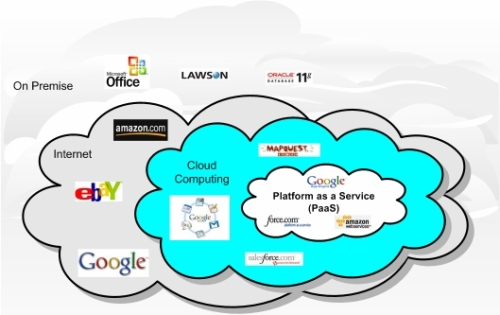Cloud computing is a new concept that many confuse with grid computing. This emerging technology incorporates technologies like Software-as-a-Service (SaaS) and Web 2.0 where reliance is on the internet to satisfy user needs. A few examples would be Salesforce.com, Google Apps and Amazon EC2, where the software resides on servers in the cloud, and users merely access them, most commonly through an internet browser.

Salesforce.com is able to further reduce costs by running their application on a multi-tenant architecture. What this means is they have only one copy of the application serving multiple customers. This reduces development costs by having only one application to maintain and upgrade. It also reduces server cost, because servers are not sitting around idly waiting for requests, as is the case with dedicated servers or client-server architecture.
